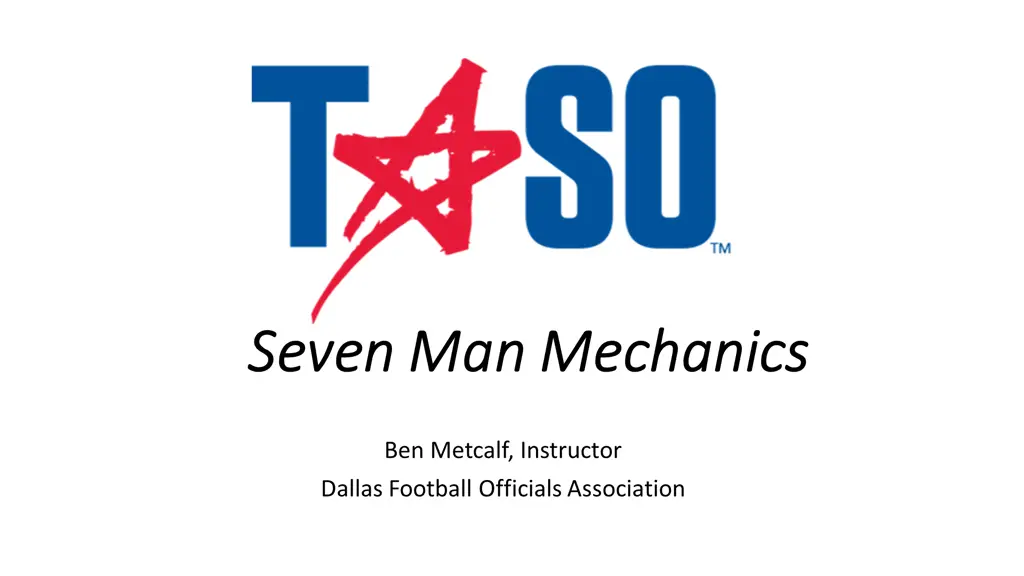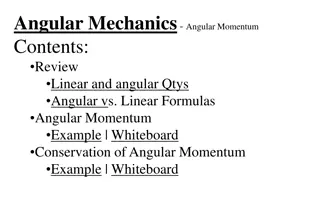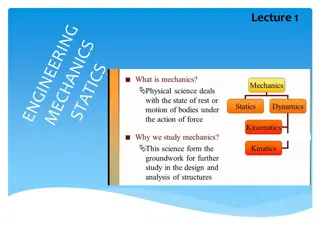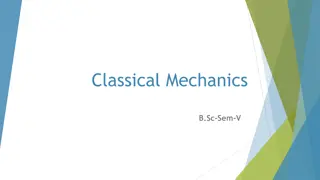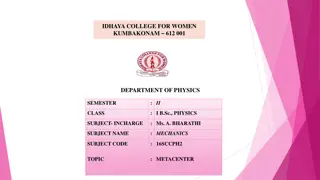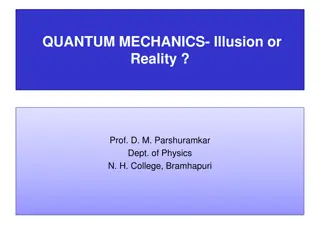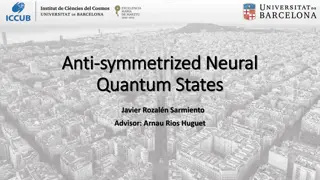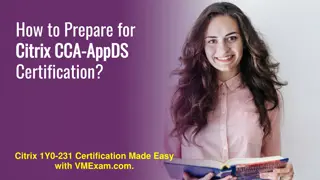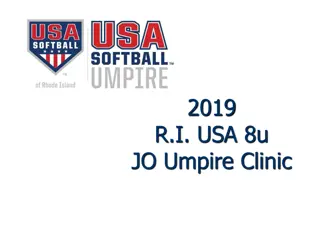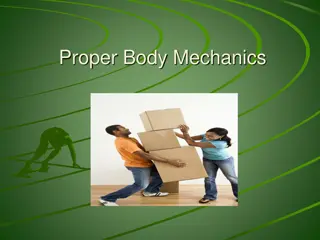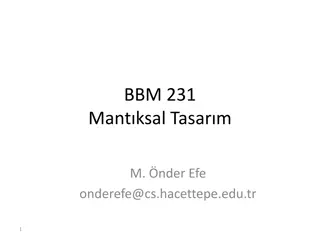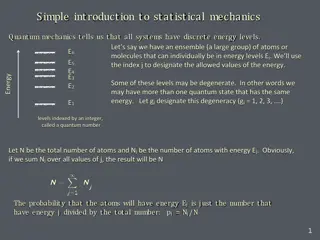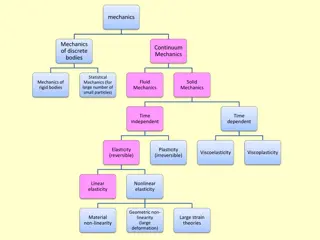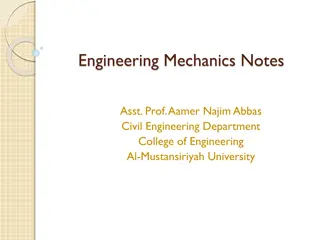Seven Man Mechanics
Learn about the benefits of using a crew of seven football officials, including improved area coverage, detection of infractions, sideline control, and more. This guide covers pre-game responsibilities, free kicks, scrimmage plays, passing plays, and special teams situations.
Download Presentation

Please find below an Image/Link to download the presentation.
The content on the website is provided AS IS for your information and personal use only. It may not be sold, licensed, or shared on other websites without obtaining consent from the author.If you encounter any issues during the download, it is possible that the publisher has removed the file from their server.
You are allowed to download the files provided on this website for personal or commercial use, subject to the condition that they are used lawfully. All files are the property of their respective owners.
The content on the website is provided AS IS for your information and personal use only. It may not be sold, licensed, or shared on other websites without obtaining consent from the author.
E N D
Presentation Transcript
Seven Man Mechanics Seven Man Mechanics Ben Metcalf, Instructor Dallas Football Officials Association
Why use Seven Officials? A crew of 7 will provide more consistent area coverage Better detection of infractions and enforcement of rules Better sideline control Preventative officiating is improved Improved coverage on the back side of a play Dead ball officiating improved Easier ball mechanics on deep pass plays and punt coverage
Pre-Game Responsibilities **All officials adhere to standard 5 Man Mechanics S/B: Instruct clock operators minimum 60 min before kick. S has clock duties if there is no on-field clock S/F: Monitor teams and maintain buffer area Accompany and assist H/L with directions for chain crew Accompany and assist with instructions for ball boys Bring captains to 50 on their team sideline four min before kickoff.
Coin Toss SF Escort captains to 9yd marks and stop while sending them to middle of field with R/U Do not allow team members who are not involved in the toss inside the 9yd marks on your side H/L/B: Remain on the sideline. H/B have a game ball from your sideline ready until winner of toss is determined S/F is responsible for securing 2ndhalf option from coach on appropriate sideline
Free Kick: Keys
Free Kick: Movement
Free Kicks: H/L Count Receiving Team players and signal to H/L/R Responsible for Goal Line and pylon in your zone Watch for holding, blocks below waist, illegal wedge, blindside block Observe area in front of runner or clean-up behind the play Responsible for forward progress until handing it off to F/S at the A2
Free Kicks: F/S Count Team A players and signal to U/B/F/S Responsible for Team B restraining line. Watch for: Encroachment by Team B First touching by Team A Kick-Catch interference by Team A Fair catch signals on pooch kicks and deeper kicks short of the L/H Be alert for short free kicks and balls kicked immediately into ground Move downfield and maintain cushion you may have to reverse field You have responsibility from A2 to Team A goal line Clean up area and retrieve old/bring in new ball for your sideline
Short Kick All: Be alert for legal/illegal touching, early blocks, fair catch, KCI H/L watch for ball kicked immediately into ground H/S and L/F Mechanics are reversed: S/F have Team B goal line (if kicked deep), forward progress (up to the A2) and dead ball spot. H/L have A2 to Team A goal line
Scrimmage Plays Second Half First half
Scrimmage Plays: H/L Except for the addition of a key receiver, responsibilities are unchanged from 5 man mechanics. Remain on LOS until ball crosses, then officiate normally 20 yd separation should be maintained by S/F to keep play boxed in Responsible for all forward progress, oob spots, until the B2 yd line If play is snapped behind B7 and goes inside 2yd line, S/F has spot and will signal TD, etc. You veer several yds behind S/F and let them officiate. Do not run into them! If ball is snapped on or inside B7, you now have goal line (S/F position on end line)
Scrimmage Plays: S/F Position 20 yds beyond LOS, out of bounds, on the sideline. If ball is snapped between B25 and B7, position on goal line. If snapped between B7 and goal line, position on endline Count Team B. Give closed fist signal to B Know your keys, based on the formation S: Remember you are always responsible for time and status of clock
Scrimmage play snapped inside B7
Running Plays: S/F Man/Zone/Ball MAN - Before the snap, identify and read your key(s) and note initial actions on and by key(s) ZONE - After the snap, officiate player action in your zone BALL - When direction of ball has been established (pass or run), officiate at and around the ball if in your zone; otherwise, back side officiating. When the ball is dead, continue to officiate your zone (dead ball officiating)
Passing plays: Basic Keys F/S will always watch widest eligible receiver in the formation on your side of the field B will watch the most inside eligible receiver on the strong side of the field. If balanced formation, strong side is to the Line Judge side. If lined up in quads, B has 2 most inside receivers. H/L will watch the eligible receiver remaining on their side
Balanced w/ TE
Balanced w/ double TE
Double Wing
Man in motion at snap
Man in motion at snap
Quads: Diamond
Quads: Stacked
Scrimmage Kicks/Punts
Scrimmage Kicks/Punts: F/S Take position on same yd line as B. If snapped inside 50, take position on goal line Count Team B and signal to B/S/F Help rule on valid/invalid fair catch signal, KCI, touchback, momentum B has receiver until he turns upfield, then he becomes S/F responsibility for progress, dead ball spot, etc. Back side official watch clean-up behind the play
Try and Field Goal Plays
Try and Field Goal Plays Field Judge Positioned under upright to rule on kick Count Team B with Back Judge Communicate status of kick to B. Signal if kick is good or no good (to your side only) Note eligible receivers in case of broken play. Cover end line if attempt is busted. Side Judge Positioned as a second umpire Count Team B with R/U Note eligible receivers Responsible for goal line (inside out) Move in to separate players after play
Measurements R/U/H/L/B: Normal duties Side Judge: Be near down marker and set box or chains for next series if a first down is awarded Field Judge: Clear area of players. Assure players and officials do not block view of measurement from press box. If 3rddown or less have Team A s ball ready If 4thdown have both team s balls ready
